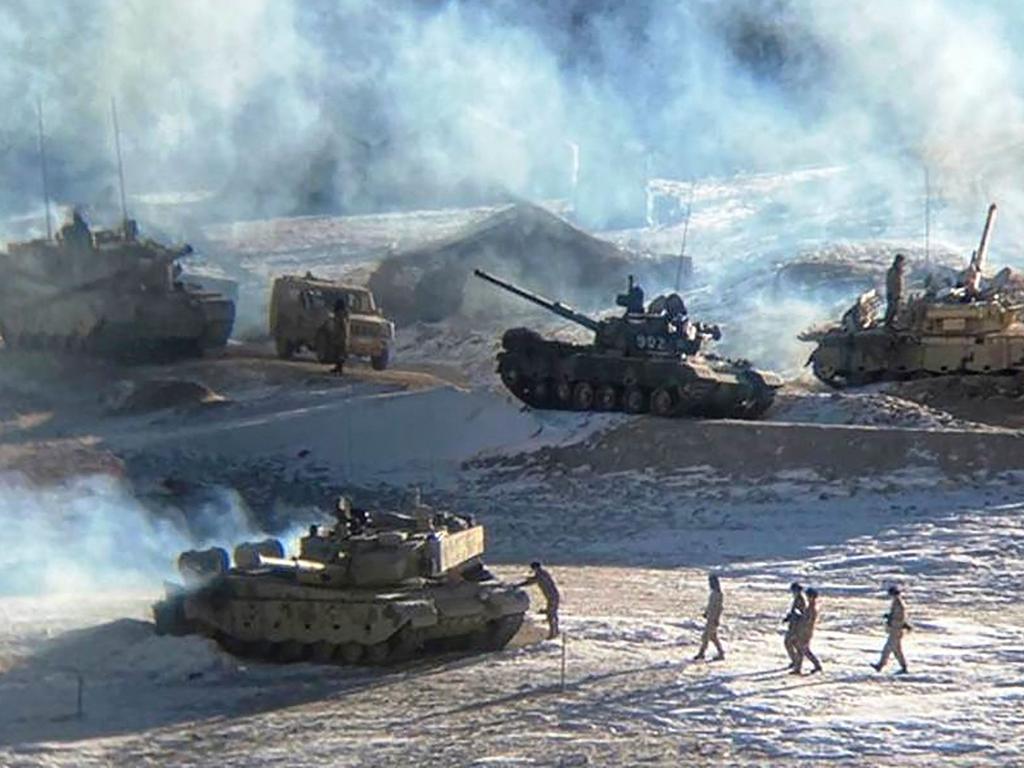Australia’s $1.3 billion ASIO spend signals a new kind of war with China
It’s been called “an attack that could have disastrous outcomes” and China’s already engaging in it right under Australia’s nose.
Australia’s future is getting decidedly spooky. China is engaging in influence and interference attacks on our way of life. Now we’re investing billions of dollars into returning the favour.
Tucked away in a quiet corner of the federal budget was an unexpectedly large number: $1.3 billion.
Alongside were ominous names: ASIO and Signals Directorate.
And the reason was vague: Technological capabilities.
Little else was said. It is, after all, the very heart of Australia’s international espionage operations.
But Flinders University lecturer in international relations, Dr Michael Sullivan, told news.com.au the clues are in Canberra’s strategic, diplomatic and domestic posturing.
“Improved technical capabilities is the wording in the budget papers,” he says.
“That relates clearly to expanded and upgraded ‘grey zone’ activities. And that means both offensive and defensive.”
The grey zone is the murky space between international law and war. It’s where plausible deniability is at play. It’s where confusion reigns supreme.
RELATED: Warship on the move amid China tensions

Evidence of this activity is everywhere.
There is an ongoing attack on US fuel supply pipelines. The blackout of an Indian city during its border dispute with China. Data thefts from Parliament House, universities and businesses.
And that’s barely even a taste.
Avast cybersecurity expert Stephen Kho says the $1.3 billion figure may sound like a significant amount. But once spread over its 10-year term, it is relatively modest compared to our Five Eyes international intelligence-sharing partners (the US, Britain, Canada and New Zealand).
“This investment is definitely a step in the right direction,” the antivirus and digital security provider adds, saying benefits from this and related cybersecurity projects will “funnel down from national security to everyday consumer security”.
Dr Sullivan says Australia already has its own established digital grey zone capabilities: “They’re operating every day. They’re focused on - but not limited to - cyber warfare. And their particular focus is the Indo-Pacific”.
It’s just that they’re now getting extra emphasis.
Threat perception
Alongside increased spending in defence, Dr Sullivan says more money for ASIO and Signals directorate suggests, “rightly or wrongly”, a heightened threat environment has been identified in the Indo-Pacific.
The focus is clearly China.
And public concern is being directed towards interference and influence campaigns.
“But it’s also likely the fact that we have significant US military assets and Five Eyes spying and monitoring assets in Australia on the northwest shelf,” Dr Sullivan says.
“They’ve never been vulnerable to direct attack before, but are likely to be so now.”
RELATED: ‘Serious consequences’: Aus scrambles

These Australian-based facilities do most of the Five Eyes monitoring of Asian communications.
That makes them strategically important.
“I think this is what’s spooked Canberra, that China is developing all these capabilities that have the potential to threaten Australia directly,” Dr Sullivan says.
“And that spooks Washington because of its assets here.”
But China is also increasingly wary.
Beijing also perceives Australia as a growing threat to its interests. Not because of our military capabilities, but because we’re such a close partner to the United States.
“China doesn’t make any distinction between what we think and do and what the Americans are thinking and doing,” Dr Sullivan says.
“So if I were a strategic planner in Beijing, I would be looking at Australia as a potential security threat and the fact that there are significant facilities here that will need to become a target.”
Cyber confusion
Grey warfare isn’t just about sabotage. It’s not just about stealing data. It’s also about undermining confidence, trust - and economics.
Dr Sullivan says he was surprised at the Defence Department’s recent urgent order to strip an Israel-made Battle Management System out of its tanks and armoured vehicles. The Elbit command-and-control system must not remain operational in any capacity beyond this weekend.
At the heart of the issue may be supply chain concerns, he says.
“Is there any Chinese technology in the Israeli systems? I don’t know. That would be the logical reason. Or it could be just the threat of this. We just don’t know. So it’s not worth taking the risk that the Chinese have got something. That, to me, is what they’re telling us.”
The outcome is a significant loss to the Australian Army in terms of preparedness, equipment and expenditure. A replacement must be found, funded, purchased and installed.

“We have no capacity to build this stuff up from the ground and reinvent the wheel,” Dr Sullivan says.
“It’s a real dilemma for national security agencies on how to secure their equipment and improve interoperability with the US. So I think this spend is to try and improve that”.
The same could also apply to other critical pieces of international espionage software - such as telecommunications intercept and analysis tools produced by Britain, Israel and the United States.
It’s a global industry worth some $15 billion annually.
“Cyber is central to all battle domains,” Dr Sullivan says.
“We’re not just thinking, land, air and sea. We’re also thinking about cyber and space. And you’ve got to be able to interoperate with your allies in all of those domains.
“I think the big spend on ASIO and Signals Directorate is confirmation of the need to upgrade the ability to do that. And it’s incredibly difficult to do because you’re relying on more and more on technology, and the human dimension gets downplayed.”
Home front
There’s much more being spent on Australia’s cybersecurity than $1.3 billion. There’s also $52 million going to the Australian Criminal Intelligence Commission. Another $1.2 billion is being allocated under the Digital Economic Strategy.
“Australia must defend our vital services such as telecommunication, water, transport and the energy sectors,” Mr Kho told news.com.au.
“This is crucial as an attack could have disastrous outcomes.”
He says a ransomware attack against US fuel pipeline systems has caused 17 states and Washington DC to declare states of emergency.
The problem facing ASIO and Signals Directorate is a global shortage of skilled cybersecurity specialists.
“Our research indicates that Australia needs approximately 17,000 additional
cybersecurity workers by 2026. This means Australia needs to rely on both the migration of skilled expats and intense Australian cybersecurity skills development programs to meet this.”
The Australian Competition and Consumer Commission’s (ACCC’s) recent decision to take on Google shows Canberra has the correct approach to digital privacy and security, Mr Kho says.
“I believe that privacy should be placed in the hands of the user and that both government and corporations need to provide this option to Australians.”

The Signals Directorate is barred by law from spying on Australian citizens. But this is becoming an increasingly murky arena as grey zone conflict often means a threat may already be within our own borders.
“I’m not so worried about state agencies collecting this sort of data because that’s their day job,” Dr Sullivan says.
“It’s regulated. But the commercial platforms collecting personal data, onselling, analysing it and putting it through algorithms to find connections and rhythms to convince you to buy their products or do whatever it is they want to do … It’s all scary stuff. There’s no such thing as privacy anymore.”
Spooky future
“The worst case is a shooting war,” Dr Sullivan says.
“We don’t want a shooting war. But we’ve got to be prepared for it. So I think that’s the stage we’re at at the moment. And before the shooting war is more conflict in the grey zone. And that’s already under way.”
The greatest risk in such a scenario, he says, is the human element. It’s the expectations and biases they are operating under. And when combined with digital surveillance, this opens up whole new arenas where things can go terribly wrong.
“Intelligence data is not perfect. It doesn’t tell you everything. It still needs to be interpreted and analysed. And if you’re in a mindset that the other side’s an enemy - that’s going to colour your interpretations.”
A classic example of this was the Weapons of Mass Destruction “evidence” used to justify the Second Gulf War. What was sold as trusted deep intelligence sources turned out to be Iraqi political lobbyists. And their evidence was a sham.
Grey zone conflict in the digital sphere heightens such risks.
“We often hear that cyber warfare doesn’t kill anybody. But as cyber warfare becomes increasingly automated with algorithms and robots and machine learning, the ability to control that by humans diminishes. Is that a good thing?
“As a defence planner, how do you respond to that? Do you just limit yourself to an equivalent cyber attack? Do you have the capacity to do that? Or do you threaten more serious retaliation? And that risks rapid escalation through the grey zone into kinetic conflict.”




